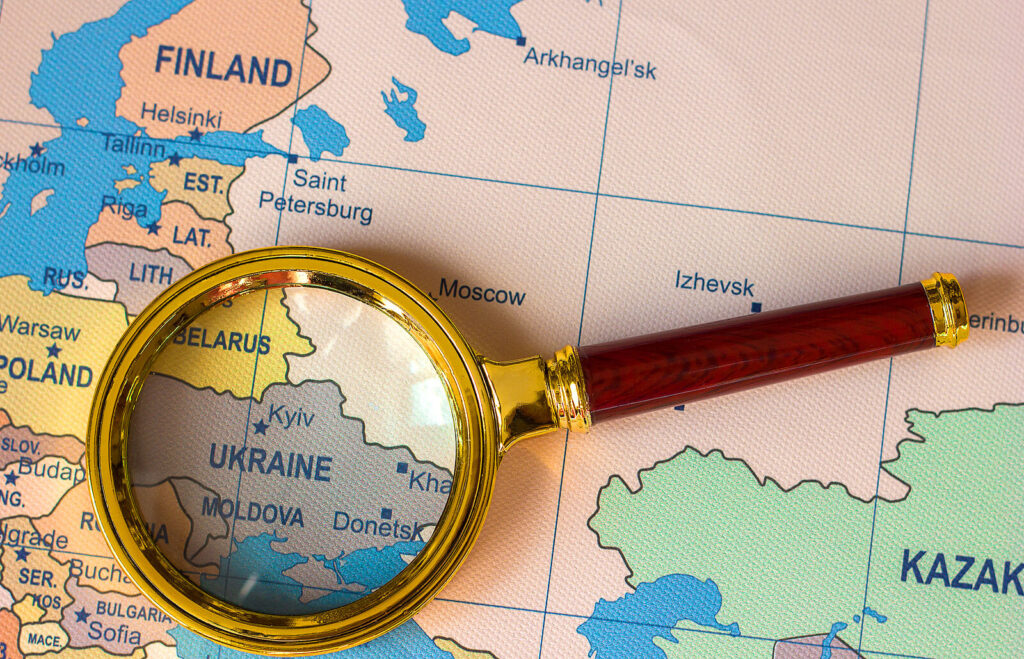When Russian forces invaded Ukraine last February, 15-year-old Roman Velychko was like so many thousands of Ukrainian children — huddling in underground shelters and focused on staying alive, their education and the future of their nation imperiled.
As Russian forces pounded the northern city of Chernihiv where he and his family lived, Roman continued to practice the violin in the bunker in hopes of auditioning for a coveted and highly competitive spot at the Juilliard School, he told me Dec. 2 on a zoom call arranged by the non-profit United Help Ukraine.
“The schools tried to stay open remotely,” said Roman, who eventually made it to the U.S. in May and enrolled at a Washington, D.C.-area high school in the fall. “But power was unreliable and inconsistent.”
The juxtaposition of practicing an instrument as missiles and artillery rained down on his city speaks volumes about Roman’s commitment to his art and music education. It also highlights the underreported plight of Ukraine’s children as the nation fights to retain its freedom from the grips of Moscow while at the same time trying to approximate a K-12 education for the nation’s 5.7 million school-age children.
Nearly a year after the invasion, K-12 schools in Ukraine are struggling. According to the country’s Ministry of Education and Science of Ukraine, by June some 1,777 of their educational facilities had been damaged with an additional 194 completely destroyed. Since then, the damage has only increased. Other sources put the number of completely destroyed schools now at greater than 300 and those damaged at approximately 2,500.
The data, of course, don’t tell the full picture of the psychological damage children are facing.
“The war in Ukraine has had a devastating effect on children, with many now bearing the mental and physical scars. Around two-thirds of Ukraine’s children are now displaced, terrified, in shock and desperate for safety,” UNICEF reported.
The schools and facilities are so damaged, and safety and security in such short supply, that distance learning, when electricity is available, is how many children are receiving a semblance of an education.
UNICEF, other groups work to keep Ukrainian children in school
UNICEF is helping some 3 million Ukrainian children with a sense of normalcy through online education efforts. Those are augmented by a patchwork of tech companies and non-governmental organizations. In just two examples, Amazon is providing cloud services and digital devices for Ukrainian children to access STEM training, literature and other learning applications. An Israeli aid organization called SmartAID has set up a network of 140 “smart classes” for thousands of children who have fled to safer parts of Ukraine or to nearby countries, so they can carry on with their education. The program provides laptops, technology and online teachers.
In addition, Ukrainians are leaning on groups like United Help Ukraine, a volunteer-based organization that has deployed over $40 million in aid for food, sanitary items, medical equipment, generators and other vital supplies to Ukrainian civilians and defenders.
That Ukraine can stitch together an approximation of a K-12 education amid the death and chaos is nothing short of a logistical feat. The U.N. said as of this month, more than 14 million people have been displaced from their homes, including 6.5 million internally displaced and more than 7.8 million across Europe. Beyond the pain and suffering of daily life, and K-12 education in turmoil, the death toll on civilians has been devastating. According to the U.N.’s most recent tally, 17,023 civilians have been killed since Russia invaded, including 419 children, some of whom may have been executed by advancing Russian forces.
Ukrainian children show huge resiliency
Despite the conditions, Ukrainian children like Roman persevere and demonstrate Olympian resilience. After he arrived in the U.S., Roman auditioned and was accepted into Juilliard’s “pre-college” program with hopes that he will be full-time in the school once he graduates high school. He told me that he is proud of his success and excited at the possibilities, though that is tempered by concern about his family, most of whom he has left behind.
For those back home, winter has descended on a region where temperatures can be brutally cold and where, according to the U.S. State Department, Russia pursues “deliberate, indiscriminate and disproportionate attacks against the civilian population and elements of the civilian infrastructure.”
Against such a backdrop, K-12 education seems like a luxury. But as with Roman and so many other children, it is pursued in Ukraine with such vigor and dedication precisely because it is a hallmark of civilization and a guiding light of hope.
A version of this commentary appeared in TheHill.com







